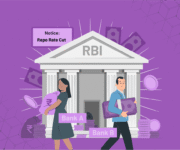Peer-to-peer (P2P) lending became a global phenomenon after the 2008 financial crash, emerging as a reliable alternative to traditional financial institutions including banks.
While P2P lending businesses started entering the Indian market in 2014, it wasn’t until 2017 when the Reserve Bank of India (RBI) issued guidelines suggesting that all P2P service providers must be registered as non-banking financial companies (NBFCs).
The future of the P2P lending sector hinges on several factors, including advancements in technology, the evolving regulatory landscape, and RBI’s proactive measures to create a streamlined credit alternative and bridge the country’s credit gap.
This blog post sheds light on the future of P2P lending and why the demand for loan origination systems is expected to grow in the future.
What is P2P Lending?
P2P lending is a simple decentralised financial model that makes credit more accessible to people via an online platform, bypassing the need for traditional lenders, such as banks.
It is typically facilitated by loan origination systems that allow borrowers and lenders to register and verify themselves and complete transactions using the platform.
Current State of Indian P2P Lending
P2P lending has gained traction among borrowers looking for quick access to funds without the lengthy processes associated with traditional banks. The market is expanding as more individuals and small businesses seek alternative financing options.
The platforms cater to a wide range of borrowers, including those with limited access to traditional banking services, thereby promoting financial inclusion.
For example, NBFCs have been pivotal in promoting financial inclusion by extending credit to underserved segments of the population. P2P platforms leverage this model, connecting individual lenders with borrowers who may not qualify for traditional bank loans.
With an asset size of Rs 54 lakh crore, the NBFC sector accounted for around 25% of the total asset size of the Indian banking sector in India. Additionally, retail credit disbursement from NBFCs is projected to reach Rs 23 trillion by the end of 2025, against Rs 18 trillion in 2023.
These figures not only highlight the crucial role of the NBFC sector in the current Indian financial landscape, but a positive trend in P2P lending. As this matures, there may be increased collaboration between P2P platforms and traditional financial institutions.
Road Ahead for P2P Lending in India and Impact on Loan Origination Systems
Low interest rates, easier approval and loan disbursal, transparency, and relatively easier eligibility barriers have made P2P lending a popular choice among the millennial and Gen Z population.
But what does the future of P2P lending look like in India? Let’s find out.
1. Need for Accessible Credit Set to Boost Demand
Although internet penetration and literacy rates have increased in India, around 190 million Indian people are underbanked even today.
The lack of physical branches, inconvenient and lengthy onboarding, and lengthy know-your-customer (KYC) process coupled with convenient app-based lending options have fueled the demand for P2P platforms in recent years.
Loan origination systems allow borrowers to extend financial services to remote parts of the country that were previously unserviced by banks. Additionally, P2P lending will shape the future of thousands of MSMEs that rely primarily on financial aid in the initial phase of their journey.
2. Technological Advancements to Push Demand for Loan Origination Systems
The advent of tech-driven credit scoring and loan processing has transformed P2P lending accelerating the overall process and boosting efficiency. The increasing adoption of artificial intelligence (AI) to determine a borrower’s creditworthiness and detect anomalies at every stage of the process.
To sum it up, affordable and accessible tech-driven loan origination systems will facilitate swift, transparent and streamlined P2P lending.
3. Regulatory Framework Will Dictate Trajectory
Regulatory scrutiny over P2P lending has compelled multiple P2P lending businesses to rethink and tweak their business strategies.
The RBI, which has aided the growth of P2P loan origination platforms and other stakeholders in the value chain has introduced new guidelines and regulatory framework to safeguard borrowers and lenders.
According to the RBI:
- The new regulations are introduced to curb non-compliant practices and make NBFC-P2P lending more transparent.
- Many P2P lenders flouted fund transfer mechanisms and promoted P2P as an investment product.
- P2P platforms also need to reveal their portfolio performance along with non-performing assets (NPA) every month.
These regulations are designed to fast-track and build the integrity of P2P and loan origination systems and ensure all stakeholders abide by the legal framework.
4. Alternative Credit Source and P2P Crowdfunding
Despite RBI’s heightened scrutiny, P2P will continue to remain a viable credit source for businesses and individuals who require instant capital to fulfil their financial requirements.
As highlighted earlier, P2P will play an important role in bridging the credit gaps. Moreover, the avenue will also have a positive impact on economic recovery since it opens up doors to accessible financing for MSMEs and individuals.
At present, many MSMEs are also pressing the RBI to lay down a strong P2P lending and crowdfunding framework to tackle credit gaps. Industry insiders say that debt-based and equity-based crowdfunding models are imperative for India’s financial growth as they would empower MSMEs to either raise funds by selling equity shares or secure funds with debt financing.
Wrap Up
India’s fintech and digital finance landscape is evolving at a rapid pace driven by changing consumer behaviour, technological advancements, and RBI’s proactive oversight in shaping the quick finance and P2P credit ecosystem.
Fintech-bank partnerships and easier access to capital will fuel P2P lending, making it more efficient and transparent, and a key driver of financial inclusion and growth.
Finezza’s cutting-edge loan origination system is developed to improve lending and borrowing experiences and promote transparency throughout the lending lifecycle.
Transform loan management with automated document identification, loan eligibility estimator, credit assessment tools, and accurate bank statement analytics.
Book a demo today to learn more.




Leave a Reply